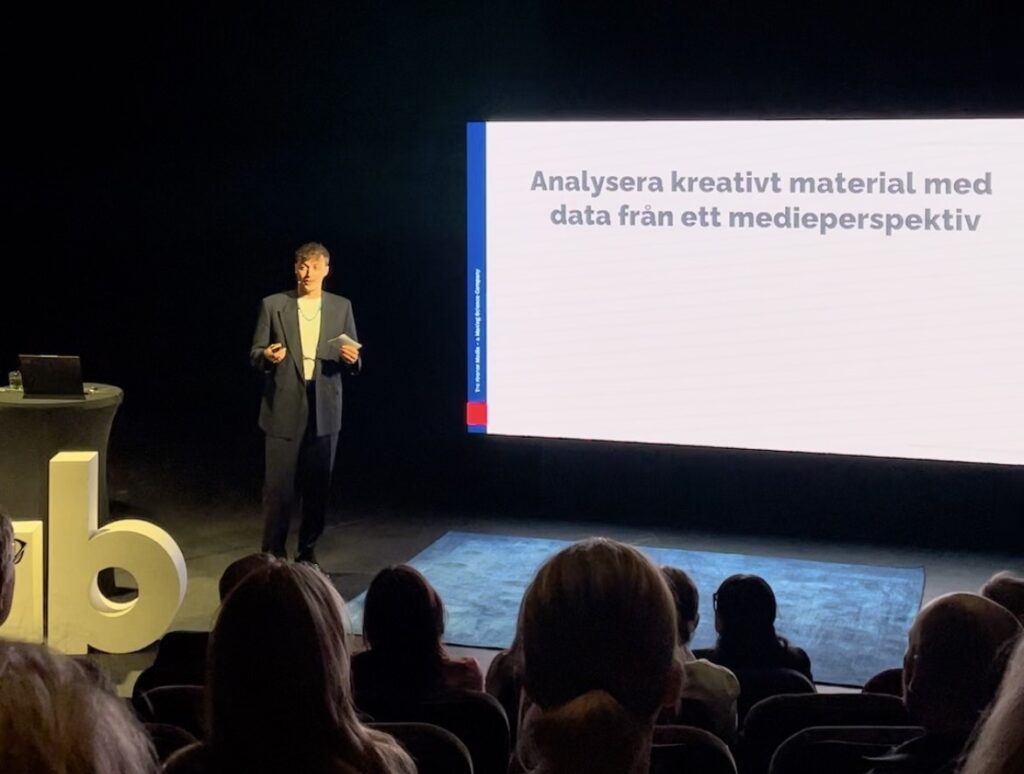
Joris Wechsler – Insight Manager
In today’s fast-paced advertising landscape, the fundamental question on every marketer, advertising agency, and media agency’s mind should be this: If an ad is displayed and no one is there to see it, was it really seen?
In the so-called Attention Economy, the goal is to attract as many views as possible. But how do we ensure that actually happens?
Answering this question turns out to be quite complex, requiring a brief dive into history.
Over 100 years ago, researchers were already fascinated by how our eyes behave and how we perceive the world around us. However, in the 1900s, there was no precise technology available to measure eye movements. Thus, researchers had to get creative.
Over time, these tools became more comfortable, smaller, and more precise. Yet, the main challenge remained: the technology was perfect for marketing, but it was too expensive and inflexible. Inviting participants to test materials and waiting weeks for results simply didn’t align with the agility demanded by media agencies today.
That’s where AI entered the picture. But can AI truly replace a test subject?
It turns out we are much more predictable than we care to admit. Especially in the first few seconds of viewing something, such as an ad, our eye movements closely mirror those of the person next to us. Even across gender, culture, and language, we tend to notice the same things first and ignore the same things. So by harnessing data from real eye-tracking studies, AI models can accurately predict what people will notice in an ad and what they will overlook. Instead of conducting a traditional eye-tracking study, we can now achieve this with a click, having a full eye-tracking study on my desk before I’ve had time to grab a cup of coffee.
We have partnered with Neurons, a Danish company that developed this technology, and have been working with them for the past two years, exploring the expanding possibilities.
But why do media agencies even care about eye tracking?
With attention spans decreasing by the day, our ability to recognize an ad in our feed and scroll past it seems faster than ever. Consequently, our ads receive shorter attention spans than before, making it crucial that they capture attention and guide viewers to what we want them to see.
We utilize AI-based eye tracking to optimize creative material from a media perspective. Are we creating content that will succeed in the media platforms where they will be displayed? Will people notice the sender’s logo? Will they have enough time to read the text?
Before AI-based eye tracking, we relied on experience and guesswork, but now we have data to support our decisions.
When we receive material from the advertising agency well in advance of the campaign, we prefer to analyze it before the campaign goes live. This allows us to make minor adjustments that can enhance the campaign’s performance, such as making key elements in the ad more prominent. Since the analysis is done instantly, we can be flexible and provide feedback to our clients within a day.
If a campaign isn’t performing as desired, we can even analyze the ad mid-campaign and A/B test changes to improve effectiveness. For instance, we improved a client’s click-through rate by 73% through small adjustments to the creative material. After the campaign ends, we use these analyses to enrich our post-campaign insights. We also draw lessons from our clients’ past campaigns and competitor advertising strategies.
My Advice:
An ad that goes unseen is an ad that won’t deliver results. Everyone in the industry strives to create ads that people actually want to see, and by using this tool, we can confidently ensure that people will notice the right aspects of our ad—at a fraction of the cost and effort.
AI doesn’t have to be daunting. Its potential is vast, and it will transform our lives in ways we might not yet imagine, but I advise not to let these grand, long-term, and resource-intensive projects distract from the fact that tools already exist that can enhance your work.
In conclusion, AI is amazing not just because it’s Artificial Intelligence. AI is great when it enables us to do things that simply weren’t possible before. What’s cool is that AI can improve our work and help us support our recommendations with reliable data in ways that were previously unimaginable.


